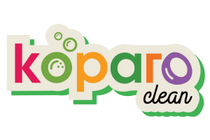
Composition of Popular Dishwash Gels: Unveiling the Ingredients
We’re all abuzz about sulphate-free and ammonia-free and no-SLS when it comes to our beauty products but what about our home cleaning products? Given how much time we spend at home and the fact that we cut vegetables on kitchen counters, our pets and kids are on the floor for playtime, we eat food from dishes cleaned by chemical products, it’s about time we asked ourselves - what is in our favourite cleaning products?
Yellow Gel & its popularity
When we’re in the store looking for our monthly list of groceries and supplies, we automatically pick the yellow or green bottle Dishwashing Gel and put it in our cart. This coloured liquid is a staple part of the lives of us Indians, it’s been in the market for quite a while. But what really goes in?
Ingredients of Chemical Popular Dishwashing Liquids
Most home care products do not need to list their ingredients and if you go looking at the bar of Dishwash gel or liquid bottle you are most likely to not find anything. However, a few websites did help in outlining the ingredients in the dishwashing detergent:
-
Sodium LAS
- Disodium EDTA
- SLES
- Concentrated Lime Juice
- CI 19140 (Tartrazine)
- CI 42051 (Cosmetic Colourant)
That’s a lot of scientific names and if you’re rushing to Google what these mean, we’ve got you covered.
Composition of Dishwashing Liquid
Sodium linear alkylbenzene sulfonate (LAS) is an anionic surfactant. It is widely used as consumer products contained in laundry detergents and kitchen detergents. If used in significant quantity, it can cause serious eye damage. It is also very damaging to the environment. LAS can cause toxicity for the aquatic organisms and harmful to aquatic life with long-lasting effects.

Disodium EDTA is in many products as a preservative, to stabilise it, or to enhance the foaming action. Although it doesn’t absorb particularly well into the skin, it disrupts the surface of skin cells so that other chemicals can get in more easily. EDTA inhibits the ability of metal ions, especially Mn2+, from catalysing the disproportionation of hydrogen peroxide, which is used in chlorine-free bleaching. In a similar manner, EDTA is added to some foods as a preservative. Oral exposures to the same have been noted to cause reproductive and developmental effects.
Sodium laureth sulfate (SLES), is an anionic detergent and surfactant found in many personal care products (soaps, shampoos, toothpaste, etc.) and for industrial uses. SLES is an inexpensive and very effective foaming agent. Like many other detergents, SLES is an irritant. It has also been shown that SLES causes eye or skin irritation in experiments conducted. SLES may also be contaminated with a substance called 1,4-dioxane, which is known to cause cancer in laboratory animals.
-
Concentrated Lime Juice
Lime Juice contains citric acid, which helps in cleaning your utensils and it’s strong smell also helps in making sure there is no odour left behind.
Tartrazine is a synthetic lemon yellow azo dye primarily used as a food colouring. Tartrazine appears to cause the most allergic and intolerance reactions of all the azo dyes, particularly among asthmatics and those with an aspirin intolerance. A 2015 study found that Yellow 5 caused damage to white blood cells, which may make the development of tumours and diseases such as cancer more likely.
C.I. 42051, is a sky blue synthetic triphenylmethane dye used as a food colouring. The colour of the dye is pH-dependent. In aqueous solution, its colour will vary from a deep blue in alkaline or weakly acidic medium to a yellow–orange in stronger acidic conditions. Patent Blue V is banned as a food dye in Australia and US, because health officials in these countries suspect that it may cause allergic reactions, with symptoms ranging from itching and nettle rash to nausea, hypotension, and in rare cases anaphylactic shock.

Alternative to these Coloured & Chemically Laden Dishwashing Gel
All this seems overwhelming, am I right? You could look at alternatives that are safer for you especially if you hand wash dishes as there is a risk that some residue may be left on your dishes post wash. You should look for dishwashing gels that are gentle on your skin as well as on your dishes. Over the course of time, the chemicals present form a layer over your utensils that you ingest in your system 3 times a day!
Might we suggest Koparo’s Dishwashing Liquid? It is made with plant-based ingredients and no artificial colours. The formulation is PETA-certified vegan & cruelty free too!




